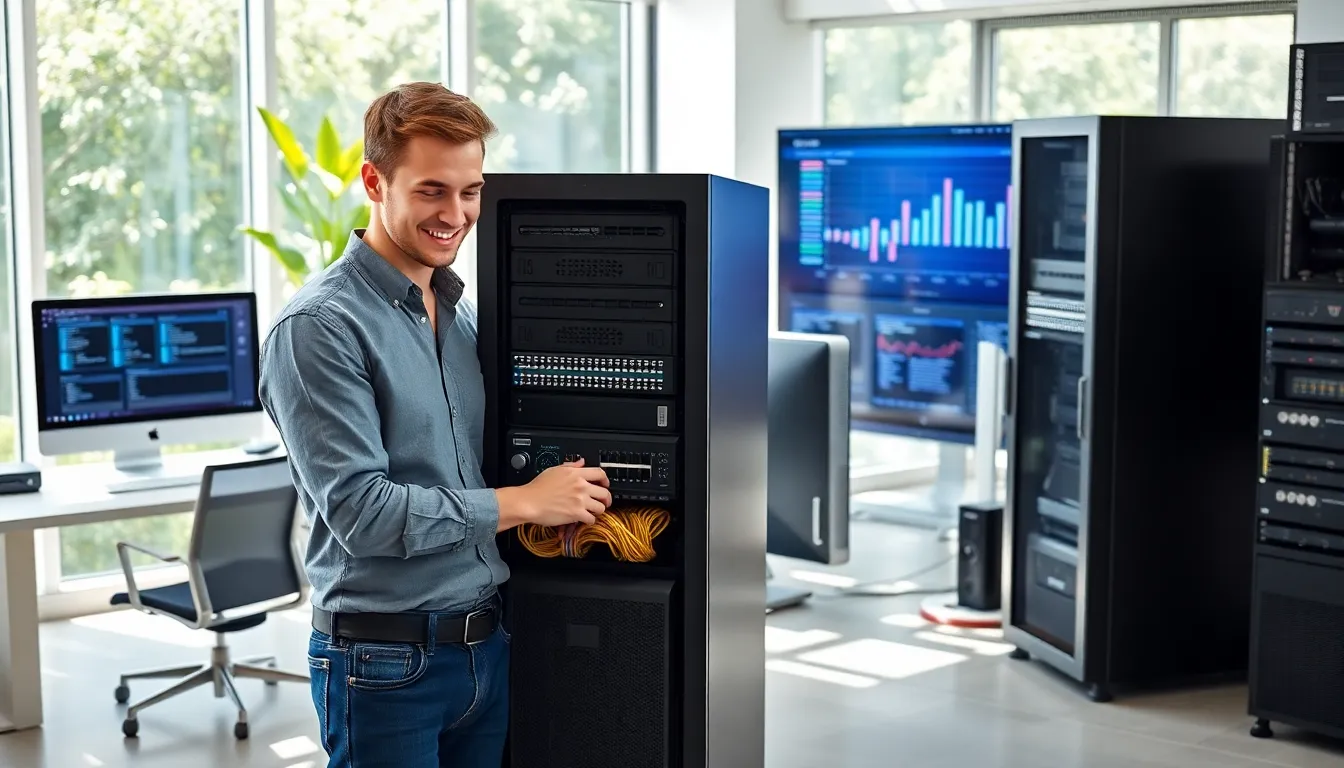In today’s digital landscape, hardware forms the backbone of countless businesses, influencing everything from operations to efficiency. Whether a company is small or large, understanding hardware and its various components is crucial. This article delves into hardware’s significance, types, selection processes, integration with software, maintenance strategies, and future trends, offering comprehensive insights for business leaders and tech enthusiasts alike.
Table of Contents
ToggleUnderstanding Hardware and Its Importance

Hardware is the collective term for the physical components that make up a computer system and enterprise technology infrastructure. It includes everything from servers, network devices, and personal computers to storage devices and peripherals.
The importance of hardware cannot be overstated. It is the tangible backbone that supports software applications and services. A well-chosen hardware setup can drastically improve performance, enhance security, and streamline processes. For instance, a small retail business equipped with high-end hardware can process transactions more swiftly, contributing to better customer experiences and increased sales. In the age of digital transformation, overlooking hardware could mean falling behind competitors who leverage the latest technologies.
Types of Hardware Components
Understanding the different types of hardware components is essential for any business. Here are some of the main categories:
1. Input Devices
These are components that allow users to input data into a system. Common examples include keyboards, mice, and scanners.
2. Output Devices
These devices present data from the computer system to the user. Examples include monitors, printers, and projectors.
3. Storage Devices
Storage hardware is crucial for keeping data safe and accessible. This category includes hard disk drives (HDD), solid-state drives (SSD), and external storage devices.
4. Processing Units
The central processing unit (CPU) is the heart of any computer, executing commands and processing data. Also, graphics processing units (GPUs) play specific roles, particularly in graphic-intensive tasks.
5. Networking Hardware
Networking devices such as routers, switches, and hubs are vital for connecting different devices within a network.
Choosing the Right Hardware for Your Business Needs
Selecting the right hardware is a strategic process that should align with business objectives. Here are several factors to consider:
1. Assess Requirements
Businesses must begin by evaluating their unique needs and operational requirements. This includes understanding the volume of data processed, the types of applications in use, and the expected level of performance.
2. Budget Considerations
A well-defined budget is crucial. High-performance hardware often comes with a higher price tag, but it’s essential to balance cost with quality and longevity.
3. Scalability
As businesses grow, so do their hardware needs. Investing in scalable solutions ensures that companies can expand their capabilities without requiring a complete overhaul of their systems.
4. Compatibility
Hardware must be compatible with existing software and systems to avoid integration issues. Businesses should verify compatibility before making significant investments.
5. Reputable Vendors
Choosing vendors with a proven track record of delivering quality hardware and support services significantly influences the longevity and performance of hardware investments.
Integrating Hardware with Software Solutions
The integration of hardware and software is essential for optimized performance in any business environment. Here are key considerations:
1. Interoperability
Ensuring that all hardware components can communicate effectively with software applications is vital. This prevents bottlenecks and enhances efficiency across systems.
2. Driver Support
Hardware requires appropriate drivers to function correctly with software applications. Regularly updating drivers ensures compatibility and enhances performance.
3. Security Measures
Integrating hardware and software should also involve implementing security measures. Firewalls, antivirus software, and regular updates are essential to safeguard data.
4. Real-Time Monitoring
Using hardware systems equipped with monitoring capabilities allows businesses to track performance and spot potential issues before they escalate.
Maintenance and Upgrades of Hardware Systems
Regular maintenance and timely upgrades are critical for extending the life of hardware systems. Here’s how businesses can maintain their setups effectively:
1. Routine Checks
Establishing a schedule for hardware inspections can preempt larger issues, ensuring that all components are functioning optimally.
2. Cleaning and Hygiene
Dust and debris can hinder the performance of hardware. Regular cleaning of devices and ensuring adequate cooling can prevent heat-related issues.
3. Upgrading Components
Rather than a complete hardware replacement, businesses can upgrade specific components such as adding RAM or changing to SSDs to improve performance and efficiency.
4. Technical Support
Access to reliable technical support can help in diagnosing issues and resolving them promptly, ensuring minimal downtime.
Future Trends in Hardware Technology
The future of hardware technology is evolving rapidly, driven by advancements in various domains. Some key trends to watch include:
1. Artificial Intelligence (AI) Integration
AI is becoming an integral part of hardware, enhancing capabilities in processing and performance. Devices that can learn from user behavior can improve efficiency.
2. Edge Computing
With the rise of IoT devices, edge computing is gaining traction. This technology allows data to be processed closer to the source, reducing latency and enhancing speed.
3. Quantum Computing
Still in its infancy, quantum computing promises to revolutionize how we handle massive datasets, with capabilities far surpassing traditional systems.
4. Sustainable Hardware Solutions
As environmental concerns grow, the focus on sustainable and energy-efficient hardware is expected to increase, prompting manufacturers to innovate towards greener components.
Conclusion
Hardware WebBizMagnet.com serves as a crucial resource for businesses aiming to enhance their technological infrastructure. Understanding the fundamentals of hardware, from its types to maintenance strategies, enables businesses to make informed decisions that align with their goals. Eventually, investing in the right hardware not only supports current operations but also prepares businesses for future challenges and opportunities.


